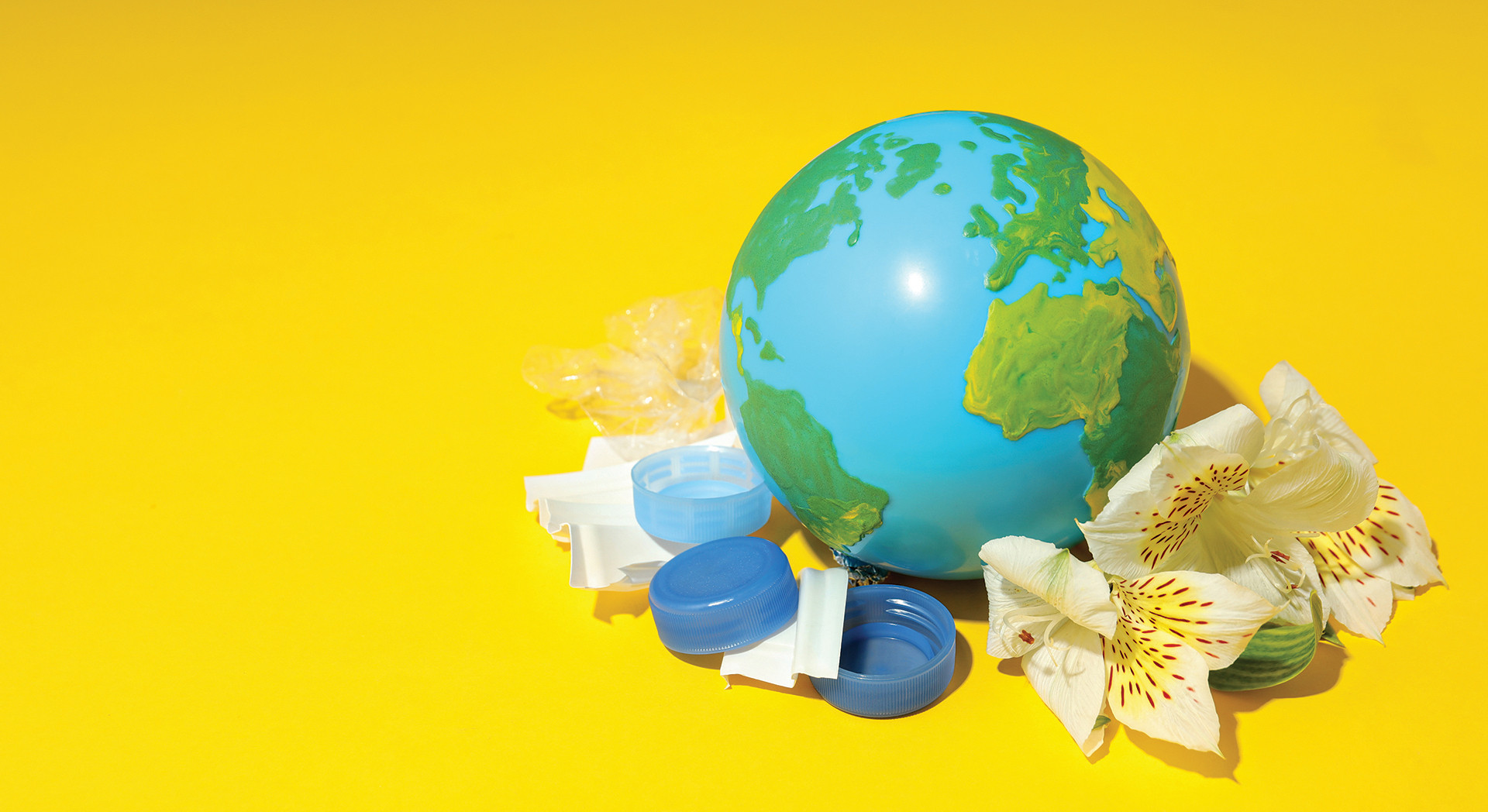
This Earth Day, take a closer look at what you consume.
From the air we breathe to the water we drink, our well-being is directly linked to our ecosystems. The challenges posed by human-made toxins require a collective response – one that unites scientists, policymakers and communities in a mission for a cleaner, safer world.
Pesticides While they play a critical role in modern agriculture, pesticides also pose serious health risks to humans and wildlife. Exposure to pesticides has been linked to neurological disorders and even an increased risk of cancer. Farmworkers and people living near agricultural areas are particularly vulnerable to these exposures, and residues can persist on fruits and vegetables, affecting consumers as well. Even low levels of chronic exposure can have subtle, yet significant, effects on health. For example, certain pesticides are known endocrine disruptors, interfering with hormone functions that are essential for growth and development. These compounds can affect reproductive health and are linked to developmental delays in children.
Forever chemicals Among the most concerning contaminants are per- and polyfluoroalkyl substances (PFAS), often referred to as “forever chemicals” because they do not break down easily and are persistent in the environment and in the human body. PFAS have been used in various consumer products, including non-stick cookware, fast-food packaging, water-repellent fabrics, firefighting foams and beauty products. Exposure to forever chemicals has been linked to thyroid disease, immune-system dysfunction, cancer and other health problems.
Microplastics Once released, these fragments of plastic less than 5 millimeters in size travel through waterways, accumulate in the oceans and eventually make their way into the food chain. Research shows microplastics are present in drinking water, seafood and the air we breathe. While the full extent of health effect is still under investigation, early studies show that they can cause inflammatory responses and disrupt cellular functions.
Other toxins Our lives are filled with toxins, from industrial emissions to vehicular exhaust to synthetic chemicals in household products. Many personal care items – including lotions, creams, makeup and hair care products – contain parabens, phthalates, synthetic fragrances and other chemicals. These toxins enter our bodies through inhalation, ingestion or skin contact. Combined with external environmental pollutants, they can lead to hormone imbalances, potentially resulting in premature aging, reproductive disorders and even increased cancer risks.
How we can create change
Protecting our planet is synonymous with protecting ourselves. Here are some practical steps we can take to mitigate the risks associated with environmental toxins and support healthier, more sustainable practices:
Advocate. Support policies that limit the use of harmful chemicals in agriculture, industry and consumer products. Increased regulation can drive innovation toward safer alternatives.
Shop wisely. Whenever possible, opt for organic produce, sustainably sourced products and items with minimal chemical additives. This not only reduces personal exposure to pesticides and harmful substances but also supports better farming practices.
Be selective. Look for skin care and beauty products that are free of harmful chemicals. Many brands now offer natural and organic alternatives.
Support regenerative agriculture. Pick products that are certified or labeled as regenerative. By choosing food grown using practices that restore soil health and promote biodiversity, consumers help drive demand for farming models that benefit both the environment and public health.
Shop local. Participate in community-supported agriculture, visit farmers markets and support local producers. Such efforts not only reduce environmental impacts but also foster community resilience and economic sustainability.
Educate yourself. Stay informed about environmental issues and their effects. Share reliable information with friends, family members and your community to deepen awareness and help bring about proactive change.
Minimize plastics. Stop relying on single-use plastics by choosing alternatives, recycling properly and supporting initiatives aimed at reducing plastic pollution.
Resources for further information
For further information and engagement, explore the resources listed. Together, we can build a legacy of sustainability and wellness for generations to come.
Environmental Protection Agency (EPA): The EPA provides comprehensive resources on environmental regulations, research, and initiatives related to pollutants and public health.
Environmental Working Group (EWG): EWG is a nonprofit that offers detailed guides on consumer products, agricultural practices, and environmental toxins.
National Institute of Environmental Health Sciences (NIEHS): NIEHS conducts research on the effects of environmental exposures on human health and provides resources on various environmental toxins.
Rodale Institute: A leader in regenerative agriculture research, this institute provides insights and data on sustainable farming practices that benefit both the soil and human health.
Regeneration International: An organization focused on promoting regenerative agriculture worldwide, offering resources and success stories from communities that have adopted these practices.
Environmental Health News: This website features news stories, expert analyses, and updates on the latest research in environmental health.
Army veteran Jennifer Campbell is a certified personal trainer with a master’s degree in nutrition education. She is past commander of the California Legion’s 24th DiStrict and Hollywood Post 43.
- News

